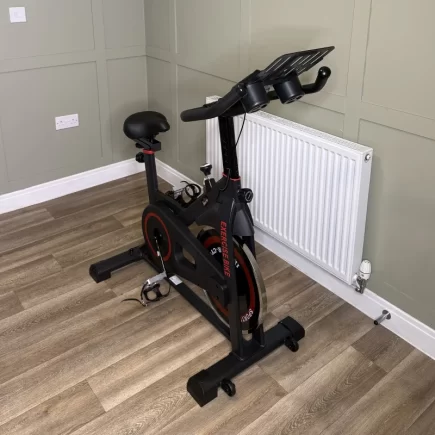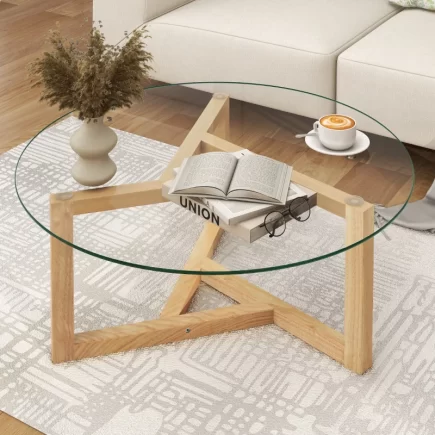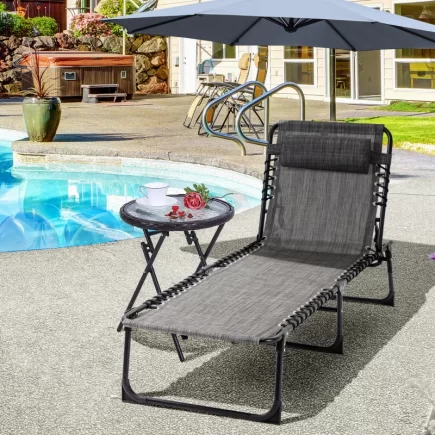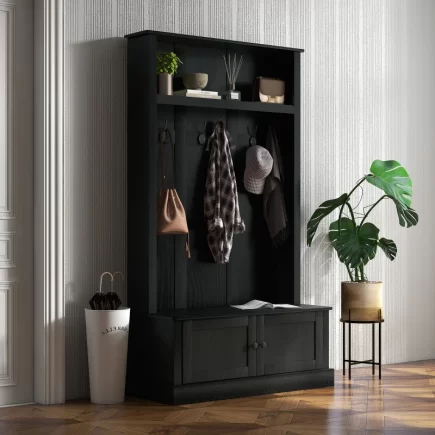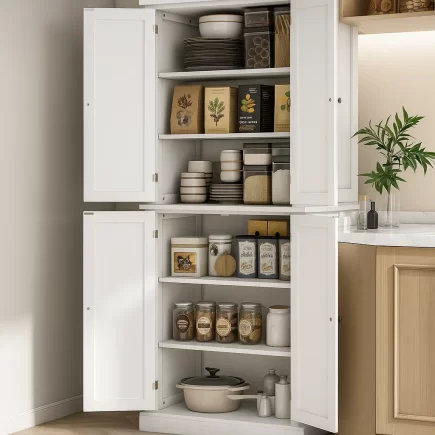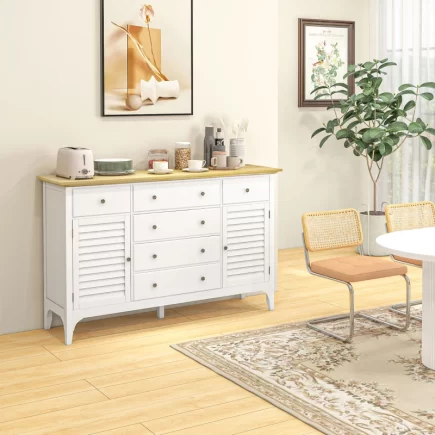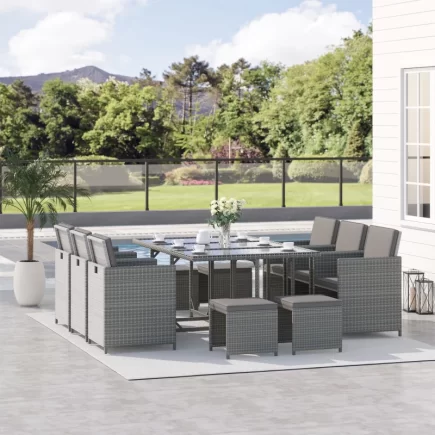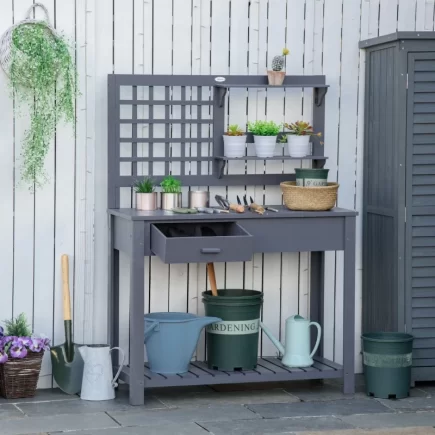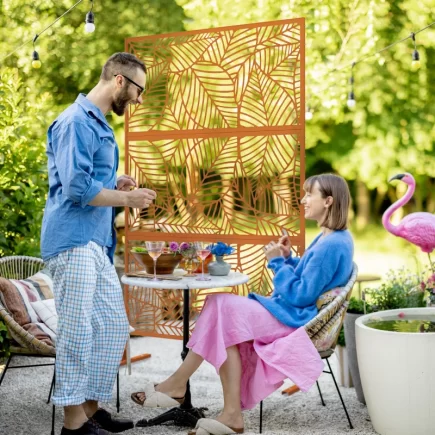Ottomans and coffee tables are among the most practical and versatile pieces you can add to a living room. When used together, they have the potential to create a cohesive and inviting space. The key lies in how you position them so they work in harmony, not in competition.

It’s not just about filling up space with furniture. It’s about designing a layout that feels natural, enhances the way you move through the room, and supports everyday comfort. Whether you’re working with a small apartment or a large open-concept area, and whether you prefer clean minimalism or bold layers of décor, arranging an ottoman and coffee table thoughtfully can truly transform the feel of your entire room.
Function of Each Piece
Before you start arranging anything, take a moment to think about what role each piece plays in your living room. Knowing their purpose will help you create a layout that feels both functional and inviting.
Coffee Table: The Conversation Anchor

The coffee table is more than just a surface; it’s the centre point of your seating area. It helps define the space and brings everything together. You can use it to hold drinks, display books or candles, and keep essentials like remotes within easy reach. In most living rooms, it serves as the functional core of the layout.
Ottoman: The Versatile All-Rounder

An ottoman is one of the most flexible pieces of furniture you can own. It works as a comfortable footrest, an extra seat when guests drop by, or a soft surface for a tray filled with snacks or décor. Some ottomans even offer hidden storage, making them perfect for tucking away blankets or magazines. In smaller spaces, or when you’re going for a cozy, casual vibe, an ottoman can even take the place of a traditional coffee table.
Popular Layout Strategies
The way you position your ottoman and coffee table can transform the look and feel of your space. Here’s one of the most practical layouts to consider:
1. Side-by-Side Layout

Best for larger living rooms or rectangular spaces.
- Position the ottoman next to the coffee table so each piece has its own function. The coffee table can hold drinks, books, or décor, while the ottoman serves as a footrest or extra seating.
- This layout keeps the space balanced and gives everyone a place to rest their feet or set something down.
- Maintain around 14 to 18 inches of space between the two pieces. This keeps the area open and prevents things from feeling cramped.
2. Layered Placement

If your space is limited or your ottoman serves multiple functions, this layout is both stylish and practical.
- Use a coffee table that has an open base or raised legs. It should have enough clearance underneath to allow part of the ottoman to slide in comfortably.
- Make sure your ottoman is low-profile and not too bulky. It should easily move in and out from under the table without scraping the floor or catching on the sides.
- Push the ottoman halfway or fully underneath the coffee table when it’s not being used. This keeps the area looking clean and gives you more walking room.
- When you need extra seating, a footrest, or a soft surface for a tray, simply slide the ottoman out. After use, tuck it back under the table to keep the room open.
3. Opposing Setup

This layout works beautifully in symmetrical living rooms where balance and structure are part of the design.
How to Set It Up
- Start by placing your coffee table in the center of the room, ideally on top of or near a rug to ground the arrangement.
- Position the ottoman directly across from the coffee table, on the opposite side of the rug or room.
- Keep enough space between the two pieces for easy movement; roughly 18 to 24 inches works well.
This arrangement keeps the room feeling visually balanced. It creates two focal points that complement each other without crowding the space. Both the ottoman and coffee table have room to stand out, offering function and style without overlap.
Use this setup when you want your space to feel clean, organized, and thoughtfully arranged.
4. Flanking the Coffee Table

This layout adds a touch of symmetry and sophistication, making it ideal for formal living rooms or well-structured seating arrangements.
How to Set It Up
- Start with a rectangular coffee table as your centrepiece.
- Place one ottoman on each side of the coffee table, spacing them evenly to create a balanced look.
- Make sure there’s enough room for movement around the entire setup, especially if you plan to use the ottomans for extra seating.
- The symmetry of this arrangement brings a clean, organized feel to the room. It also boosts functionality by adding two extra seats that blend in seamlessly with the rest of the furniture. Nothing feels out of place, and the flow of the room stays uninterrupted.
Design Tip:
Choose ottomans that are just slightly shorter than your coffee table. This adds subtle visual layering and keeps the layout feeling light and intentional.
5. Diagonal Arrangement

If your space feels tight or slightly off-balance, try angling your coffee table and ottoman instead of placing them directly in front of each other.
- Position the coffee table slightly on an angle in relation to your main seating.
- Place the ottoman at a matching angle, facing the coffee table but not directly head-on.
- Adjust the spacing so both pieces feel connected but still allow room to walk through comfortably.
This layout is perfect for small or uniquely shaped rooms where a straight layout might feel too stiff. Angling your pieces softens the space, breaks up hard lines, and adds a more casual, welcoming feel to the room.
6. Using Rugs to Anchor the Arrangement

Rugs do more than just add texture or warmth; they visually organize your space and help everything feel intentional. When placing your coffee table and ottoman, the right rug placement can pull the whole layout together.
- If your coffee table and ottoman are working together in the same area, place both on the same rug. This creates a unified zone and keeps the space feeling cohesive.
- If the pieces serve different purposes, like one anchoring a conversation area and the other in a reading nook, consider using separate rugs. This helps visually separate the zones while maintaining flow within the room.
Rugs provide structure to open spaces and can guide the eye toward your key pieces. They also help soften transitions between furniture, making your room feel more inviting and well-designed.
7. Corner Configuration

If you have a sectional or an L-shaped sofa, this layout is a smart way to use both a coffee table and an ottoman without overcrowding the space.
- Place the coffee table in the centre of the seating area so it’s easily accessible from all sides.
- Position the ottoman in the inside corner where the two sections of the sofa meet. This spot is often underused, but it’s perfect for extra leg support or an added seat.
This arrangement gives everyone a clear path to use the coffee table while offering the comfort of an ottoman right where people naturally stretch out. It keeps the layout open, functional, and cozy. Be sure to leave enough space between the coffee table and ottoman, about 14 to 18 inches to allow for easy movement. You want to maintain comfort without making the area feel cramped.
Mixing Shapes and Styles
Don’t be afraid to mix and match. Here are pairing examples that work well together:
| Coffee Table Style | Ottoman Pairing |
| Glass & Metal | Tufted fabric or velvet ottoman |
| Rustic Wood | Woven or leather ottoman |
| Mid-century | Round, low-profile ottoman |
| Contemporary | Cube or bench-style ottoman with storage |
Contrasts in texture and shape often work better than trying to “match” items exactly.
Tips for Families and Pet Owners
When designing a space that includes a coffee table and ottoman, comfort and safety are just as important as style, especially in homes with kids or pets. These simple choices can make your layout more family-friendly without sacrificing design.
- Choose ottomans with durable or washable fabrics. If they’ll be used daily for lounging, footrests, or even snack time, opt for materials that can handle spills and frequent cleaning.
- Skip glass-topped coffee tables in busy areas. Glass may look elegant, but it’s not always the best choice for homes with little ones or playful pets. Go for wood, metal, or fabric-covered alternatives that are safer and more forgiving.
- Pick ottomans with soft, rounded edges. These help reduce the risk of bumps or bruises, especially in high-energy spaces where kids are running around or pets are exploring.
Seasonal Arrangements

Want to give your living space a fresh look without moving all your furniture? Small seasonal updates to your coffee table and ottoman can completely change the vibe of the room.
Here’s How to Do It:
- In Summer: Keep things light and breezy. Remove any heavy throws or blankets from your ottoman. Replace them with a minimal tray, a vase of fresh flowers, or a stack of colourful books to bring in a summery touch.
- In Winter: Add warmth and comfort. Drape a cozy knit throw over the ottoman and place a soft basket nearby to hold slippers, extra blankets, or even firewood if you have a fireplace.
- Year-Round Tip: Change out your coffee table décor to reflect the current season or upcoming holidays. Try pinecones and candles in fall, fresh greens in spring, or a few festive accents around the holidays.
These simple swaps take only a few minutes but instantly refresh your space, keeping it in sync with the seasons and your mood.
Let Your Space Guide You
No one layout works for every home. Start with what your room needs: comfort, flexibility, flow, and let that lead your choices. Ottomans and coffee tables don’t have to compete for attention; when arranged well, they become part of a cohesive, intentional space that works beautifully for your lifestyle. Need more help choosing your ottoman or coffee table combo? Browse elegant and practical Coffee Tables collection at Aosom to find pieces that work beautifully together and elevate your space with ease.
FAQs
1. What type of rug works best when pairing an ottoman with a coffee table?
A rectangular area rug works best, as it complements most coffee tables and ottomans shapes. Choose a size that extends beyond the seating area to visually ground both pieces and maintain flow. Opt for low-pile rugs to keep surfaces level and stable.
2. Can an ottoman replace a coffee table in formal living rooms?
Yes, an ottoman can replace a coffee table in a formal room if styled well. Choose one with a structured shape and add a tray for functionality. It offers elegance, hidden storage, and extra seating while softening the overall look.
3. How do I style a tray on an ottoman that’s also used for seating?
Use a lightweight tray that’s easy to move. Keep it functional with space for drinks and a few decorative items like a candle or book. Choose a shape and material that complements the ottoman, and avoid overcrowding to maintain its seating purpose.


